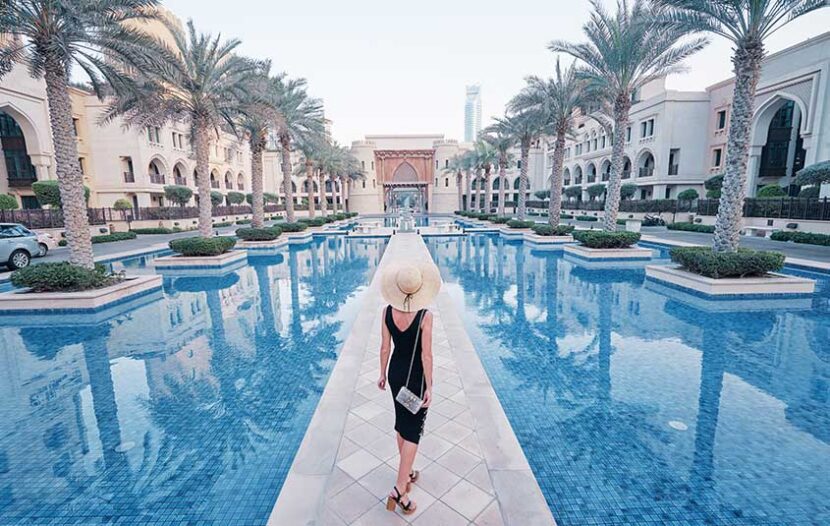TORONTO — Travel is back, or at least it’s starting to, and leading the charge will be the luxury sector, says a new report.
According to Valuates Reports’ Luxury Travel Market Report 2022, the luxury travel market size was valued at US$22200 million in 2021, and it is anticipated to reach $39300 million by 2028, registering a CAGR of about 8.4% during the forecast period (2022-2028).
Propelling this growth are several key factors, including a growing preference for personalized service, reliable transportation, exclusivity, rising middle- and upper-class disposable income, an increase in micro trips and social media. Moreover, increasing political stability around the world in terms of gender, ethnicity, sexual orientation, human rights, racism, citizenship and visa availability are also having a significant impact.
All this is amounting to more luxury bookings for 2022, says Nadiya Makarenko, Senior Vice President, Travel Edge Network.
“Clients have used the last two years to refocus on what matters to them when it comes to travel. They’re re-evaluating and actioning their bucket list trips, such as safaris in Africa to witness seasonal migration, long-stay European trips combining city and countryside, and polar expeditions.
“Bucket-list travel is here to stay – but with renewed perspective and intention. We’re seeing travellers seek a sense of fulfillment by reaching out to our advisors to actually book these trips with a ‘now or never’ mentality. They are making it happen with the support of a travel advisor by their said,” says Makarenko.
Over at TL Network Canada, Vice President Christine James is also reporting a significant increase in bookings overall compared to 2021, particularly in the luxury segment.
“Clearly, there’s a pent-up demand as most Canadians were not able to travel in 2021, and more recently with the reductions in re-entry requirements we’ve seen a marked increase in bookings over the past few weeks. We are even outpacing 2019 booking trends,” says James.
MICRO TRIPS
According to the report, the luxury travel market is expected to be driven by an increase in micro trips, short getaways that are typically close to home. However, both Makarenko and James say they’re seeing the opposite happen in terms of bookings.
“We are seeing travellers are actually going to places for longer periods of time to truly immerse themselves in the culture of a region,” says Makarenko, noting that due to flexible work styles, workations and ‘bleisure’ trips are selling particularly well, over 25% compared to recent years.
“Travel Edge professionals are witnessing longer stays in urban hubs, including long-haul trips to Europe and South America, and the duration of these trips has tripled within the last three years as the majority of long-haul travellers now last for 10 or more days,” says Makarenko.
This trend, she adds, is anticipated to extend beyond business travellers, with families combining both business and leisure as a popular way to reconnect after years apart due to the pandemic. To meet the demand of both bleisure and family travellers, Makarenko notes that hotel partners are introducing new room types focused on longer stays, in a variety f price ranges.
Though TL Network Canada did see a bit of a surge in micro trips (“shorter or domestic trips”) earlier in the pandemic due to travel restrictions, James says the needle has now shifted towards more indulgent getaways.
“This year, clients are actually taking longer, more expensive trips due to the pent-up demand over the past two years,” says James.
CONSUMER SPENDING
Consumer spending, rising millennial spending, and tourism sector expansion are all contributing to the growth of the luxury travel market. Growing middle-class populations are also a major contributor. According to the report, consumers are rapidly increasing their travel spending as a result of increased disposable income and celebrations and special events. Furthermore, rising affluence and government relaxation of visa restrictions on travellers are propelling the market forward at a rapid pace.
Also worth noting is the increase in consumer spending as the working population grows, with a greater number of women in the workforce. As a result, the market has seen an increase in the number of female travellers, which is driving the market’s growth.
SOCIAL MEDIA
Another key factor in luxury travel’s growth, according to the report, is the increasing use of the Internet and the presence of social media. Tradition advertising is becoming less effective than user-generated travel content, says the report, plus travel storytelling on social media platforms like Instagram, Facebook and blogging websites has “exploded.”
As such, both Makarenko and James agree that social media has become an essential tool for travel agents, one that can drive bookings and inspire traveller confidence.
“Social media allows clients to get personal stories from advisors they trust,” says Makarenko. “We recently had an advisor spend the weekend with her family with a luxury partner. She posted the experience on her social media all weekend, and by Monday four clients had reached out to book the same experience from her.”
James says travel advisors should educate themselves when it comes to social media, noting that TL Network Canada offers a number of training opportunities, certification programs, workshops and a community where like-minded advisors can network on an ongoing basis with fellow members and luxury suppliers.

